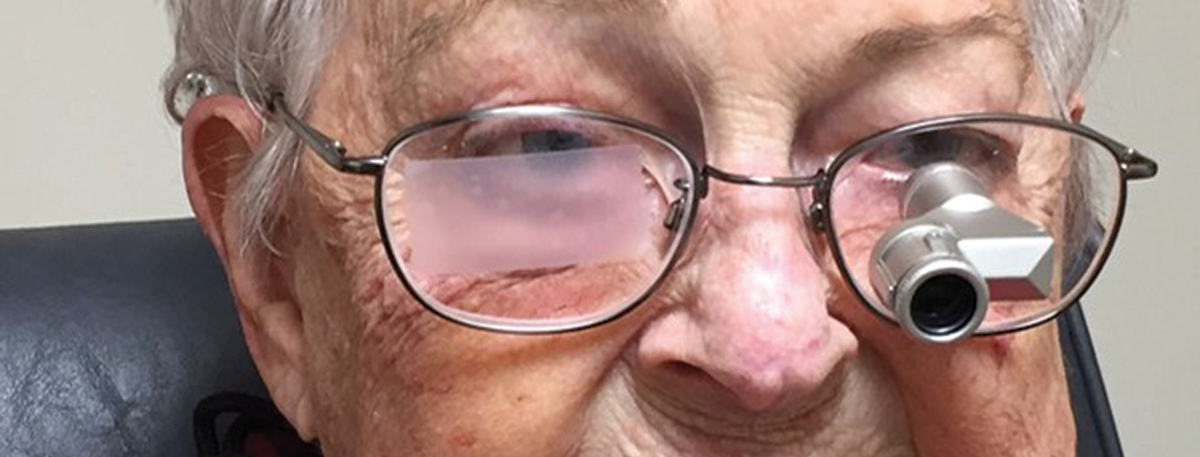 |
| The overall prevalence of DED in the low vision population was 38%, and was most commonly found in women. Performing ocular comfort assessment and questionnaires such as SPEED or DEQ-5 in these patients can help coordinate dry eye management, the study shows. Photo: David Lewerenz, OD. Click image to enlarge. |
It’s no secret that patients’ quality of life suffers when they have dry eye disease (DED), and all the more so when it’s accompanied by compromised visual function. In a new study, researchers evaluated the prevalence of diagnosed DED, meibomian gland dysfunction (MGD) and blepharitis among the low vision population and found that dry eye in this population is a significant comorbidity that occurs in over a third of patients.
A total of 2,572 patients (1,521 female, 1,051 male) were seen in the University of Colorado Low Vision Rehabilitation Service over a five-year period. A formal diagnosis of DED was made in 978 patients (646 female, 332 male). A total of 74 ICD-10 codes were used to identify patients as having dry eye syndrome or not having dry eye syndrome. Data was further analyzed to determine the prevalence of blepharitis and MGD using 29 blepharitis and nine Meibomian gland dysfunction ICD-10 codes.
The overall prevalence of diagnosed DED was 38.0%, and among the population varied by low vision provider, the prevalence ranged from 33.4% to 41.7% (the youngest patient was 17 years old and the oldest was 107). The prevalence of dry eye increased with age and was more commonly found in women, which is in agreement with previous studies.
“While this may be partially attributed to the climate of Colorado,” the authors explained in the study, these numbers are significantly higher than national averages, thus demonstrating that DED may be a comorbidity affecting low vision patients “at higher rates than the general public.” One potential explanation for this discrepancy suggested by the team is that low vision specialists “may be more likely to diagnose DED based on symptoms consistent with dry eye rather than identifying the cause of these symptoms to be MGD.”
Long-term use of topical medications to treat glaucoma is known to cause or exacerbate DED, and individuals with visual impairment are more likely to have had prior ocular surgery, especially cataract, which may chance the ocular surface anatomy.
“Furthermore, visual impairment is associated with increased mental health burden and other systemic conditions where the systemic treatments utilized commonly cause or worsen DED through reduced tear secretions,” the authors explained.
Low vision specialists are generally more focused on visual concerns rather than diagnosing ocular surface disease, the authors added, and also less likely to have meibography technology available to assess meibomian gland atrophy.
“These findings are meaningful as the ocular comfort of low vision patients should not be overlooked while managing their visual needs,” the authors explained. “It is imperative for all professionals working with the low vision population to recognize the potential for DED and coordinate dry eye management for these individuals when appropriate.”
Ocular comfort assessment in low vision patients may be quick and efficient methods, as well as short questionnaires such as the SPEED or the DEQ-5 which grades the level of dry eye symptoms, the authors concluded.
Abbott K, Hanson KS, Lally J. Prevalence of dry eye disease in the low vision population at the University of Colorado. J Optom. 2024;17(2):100501. [Epub ahead of print.] |

